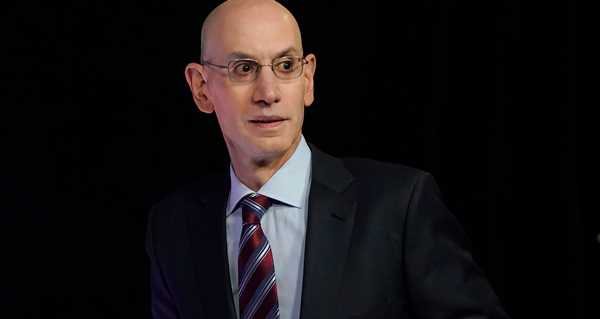Assassin’s Creed Valhalla patch 1.0.4: Xbox Series X and PlayStation 5 re-tested

Thursday’s 1.0.4 patch for Assassin’s Creed Valhalla is the first big update for Ubisoft’s latest massive open worlder – and a crucial one, delivering a vast array of gameplay improvements and bug fixes, but of course, the Digital Foundry focus is more on technical validation for what has been the most contentious of the next generation launch line-up. For all of its spec advantages, Xbox Series X ran with a performance penalty against PlayStation 5, while Xbox Series S launched without the signature next-gen 60fps support. The 1.0.4 patch aims to address of all of this – and indeed, it does – and also adds a 4K30 quality mode too.
First of all though, we need to tackle an interesting wrinkle that has emerged from the arrival of the new patch. While there’s broad consensus that the performance situation is much improved on Xbox Series X, another narrative has emerged suggesting that the PlayStation 5 version now runs worse than it did. To clear this one up straight away, we could only find one example of this actually being the case – the introductory cutscene takes an occasional, small drop to frame-rate we didn’t see in our first test. In every other stress test we have, PlayStation 5 runs at the same frame-rate with the same dynamic resolution result as it did previously.
Where there has been change is with Xbox Series X, where Ubisoft has made great strides in addressing the performance deficit, significantly reducing the intrusive screen-tearing. It’s not completely gone, but it’s certainly hugely improved and in the most stringent of our stress tests, Xbox Series X can now outperform PlayStation 5. How Ubisoft has achieved such a huge turnaround in so short a time may sound like a technological miracle, or the result of some gigantic optimisation push, but the solution is simpler than you might think.
Re-testing Assassin’s Creed Valhalla on the next-gen console systems.
All versions of Assassin’s Creed Valhalla support dynamic resolution scaling, adjusting the amount of pixels drawn on a per-frame basis in order to hit the target frame-rate. At launch, the ‘window’ of potential resolutions for both consoles scaled from 1440p at the lowest to circa 1728p at the highest – 67 per cent to 80 per cent of full 4K resolution on both axes. This remains the case for the PlayStation 5 version of the game, but lower bounds for Series X has reduced to 1188p – 55 per cent of full 4K. To be clear, Series X will only tap into these newly introduced lower resolutions when it has to. For the majority of play, pixel counts are considerably higher.
However, widening the DRS window is how Ubisoft has achieved its objectives here and it’s a good solution: momentary lower resolution is a fair trade to make against far more noticeable screen-tearing. In fact, it’s good enough to roll out for PlayStation 5 too in order to eliminate its own tearing issues, and I’m surprised the same solution wasn’t deployed on both next-gen systems. But in the here and now at least, PlayStation 5 runs with a higher resolution, while Xbox Series X generally runs a touch smoother.
Patch 1.0.4 also introduces a 4K quality mode for both machines, which seems to do exactly you would expect. The 60fps frame-rate of PS5 and Series X is traded for an evenly frame-paced 30fps, and in all pixel counts we measured, both versions run at full 4K. Dynamic resolution scaling can’t be ruled out (we’d contend it should definitely be ruled in to ensure consistent performance in all scenarios) but in this mode, both consoles are effectively interchangeable. All of which leads us on Xbox Series S, which initially launched with some graphics downgrades and a lower resolution (DRS again, but typically around 1296p) and now possesses its own 60 frames per second performance mode, thanks to the new patch.
Our original video breakdown of Assassin’s Creed Valhalla on PlayStation 5 and Xbox Series consoles.
It’s a welcome addition to the Series S version, demonstrating that there was plenty of CPU overhead available – enough to run the game flat out at full 60fps – but the question is whether the reduced four teraflop GPU can keep up. By and large, the answer there is positive, but there are clear caveats. First of all, resolution takes a big hit: the dynamic resolution window opens up, with a lower bounds of just 720p, often running around that resolution or up to circa 800p during typical gameplay. It works and it is typically more performant than the launch version of Valhalla on Series X, but can’t quite match the fluidity of the latest patch. It’s a valiant effort overall, but even 720p gaming is not enough to run this game locked to 60fps and screen-tearing is noticeable. It’s clear why the game launched at 30fps only, but introducing the option in the update is welcome nonetheless.
In summary, the patch is a good one for Xbox Series consoles and while compromises have been made, the pay-off is worthwhile. For Series X, it may now be running at a significantly lower resolution than PlayStation 5 in stress points, but the frequency of the off-putting screen-tearing is massively reduced. Worries that PS5 may now be running slower seem to be mostly unfounded, but widening the DRS window there may have also improved the overall experience for the Sony console, just as it does on Series X. Remember – resolution only drops in order to sustain 60fps, otherwise it’ll run at whatever pixel count the GPU can manage. Meanwhile, the option of 60fps gaming on Series S is a good one, but the very low resolution may be off-putting. Overall, there’s progress here, and it’ll be fascinating to see where Ubisoft goes next with further optimisations – but we’d also like to see further bug fixes: the camera stutter issue that affected Xbox Series X still hasn’t been addressed.















